Holcombe is a very old community, relatively unspoiled by modern development. Because of this, it is now a conservation area and an excellent review incorporating a lot of historical background appears in a report produced for Bury Council in 2010. It is available as “Holcombe CA Appraisal 2010” from the list of downloads on the council website. It is the basis for much of what appears below and it is strongly recommended to those seeking more information. Also of great interest are the two books on Holcombe by Rev Henry Dowsett. The Holcombe Moor Heritage Group web site provides useful information and links. and the National Trust commissioned a review of the area of Holcombe Moor in January 2024.
Bronze and iron age artefacts have been found in the area, and in Saxon times it seems likely that the name Holcombe (“hol” from the Saxon word for “hollow” and the Celtic word “cwm”; hollow on the side of a hill) first belonged to a community of scattered farms on the western side of the hill (near the present firing range); several have Holcombe as part of their names. After the Norman Conquest, Holcombe was part of the Manor of Tottington owned by the de Lacey family and in 1225 the area was bequeathed to Monk Bretton Monastery near Barnsley.
Before the Industrial Revolution in the 1700s, the routes up the Irwell valley did not run down by the river, which was marshy and thickly wooded. The local geology provided a relatively level shelf about half-way up the hill, and at this level, where the drainage was better and the land more suitable for pasture, routes and communities developed. The track from Brandlesholme, Summerseat and Holcombe Brook up the west side of the valley followed Holcombe Old Road (below), Cross Lane and Moor Road towards Helmshore.
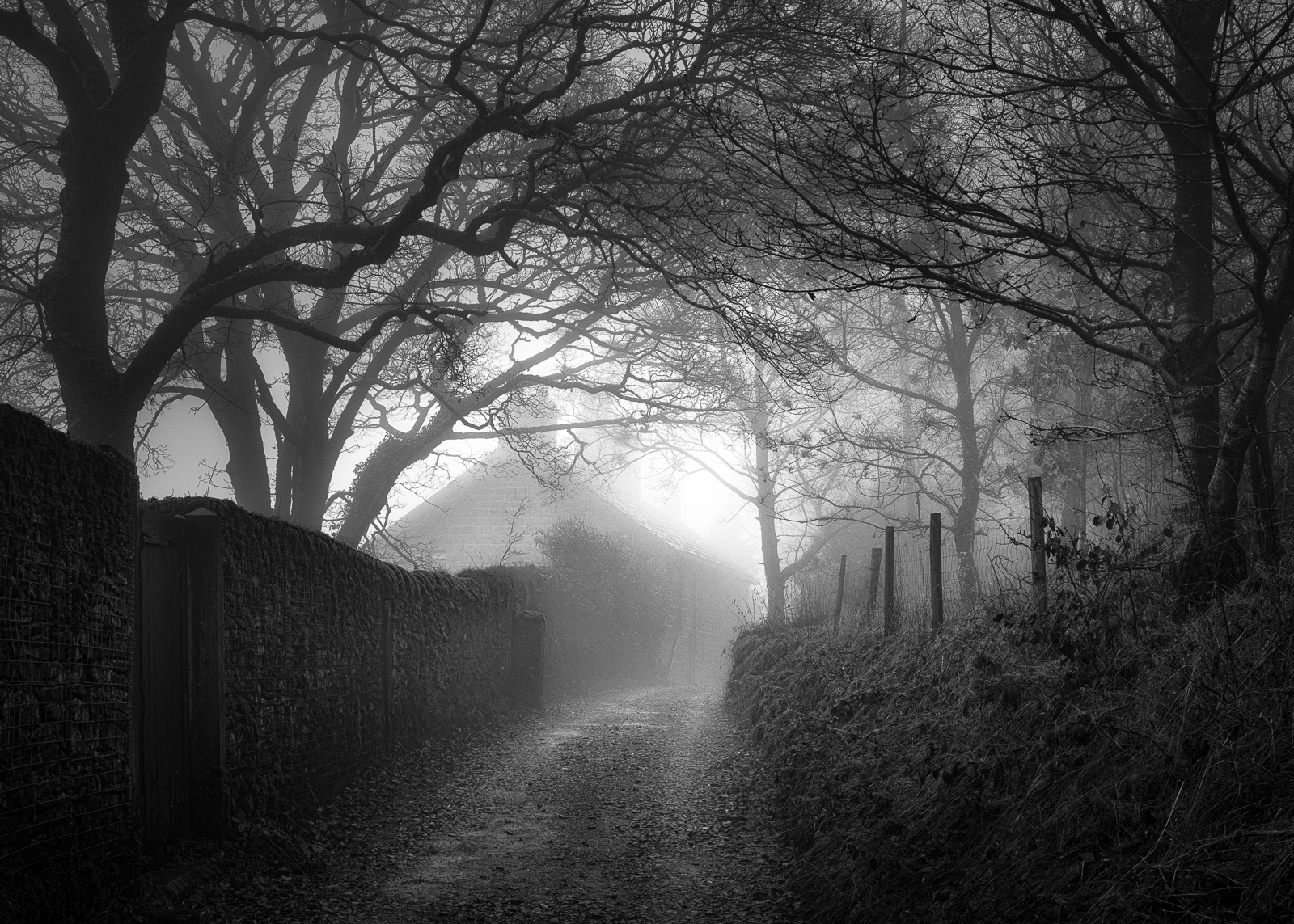
A pack-horse route from the west came round the end of the hill along Moorbottom Road and then went down the Rake into what is now Ramsbottom to cross the river at Stubbins. The place where the routes joined and crossed became the centre of Holcombe Village.
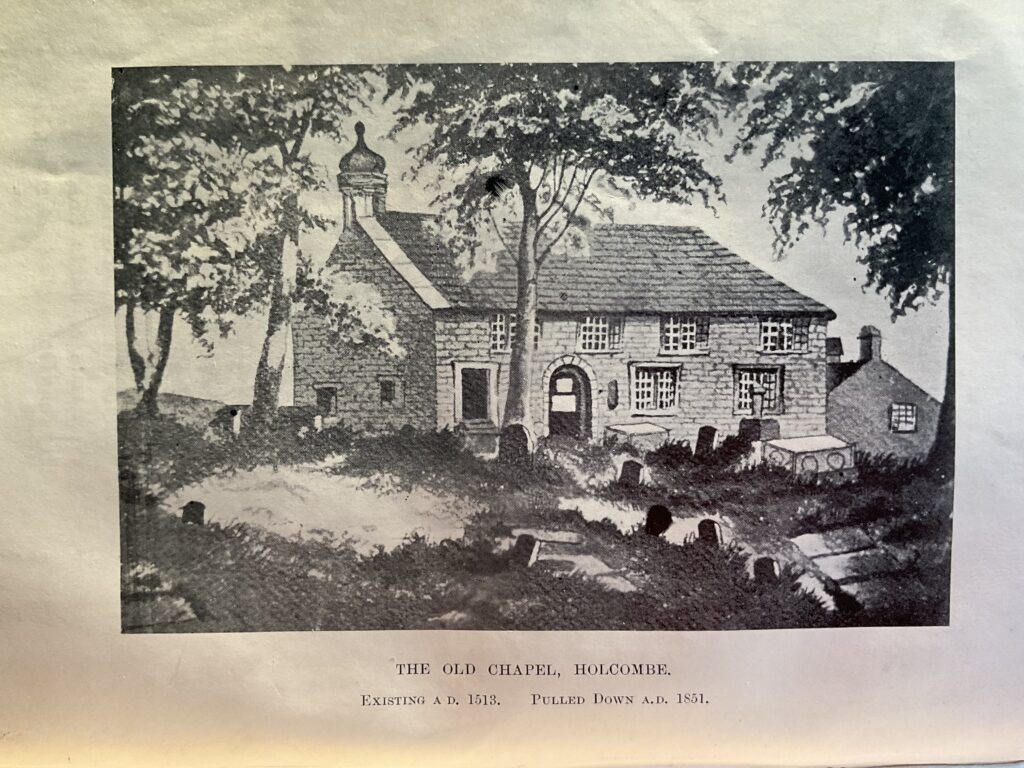
A Chapel of Ease (illustrated above) was built in Holcombe on the site of the present Emmanuel Church (below); it is referred to in a court record of 1509 so it was at least that old. The illustration above is taken from Henry Dowsett’s book “Notes on Holcombe”

Most of the buildings now in the village were built between 1600 and 1900, the older ones on the old routes of Cross Lane and Holcombe Old Road. The earliest with a date stone is Hey House, 1616, originally a Jacobean hunting lodge which may have been where the hounds of the Holcombe Hunt were kept. Nearby, Norcot with its carriage house on Moorbottom Road was a staging post on the pack horse route.
In 1664 a courthouse was built by the Duke of Albermarle below the church on the site of what is now the Old Rectory. Portions of this building still exist (though relocated). Eighteenth-century date stones are found on Tops Farm (1716), the Shoulder of Mutton (1751) and Plant Farm (1769). Tops Farm, about half a mile north of the village was once occupied by the doctor.
The principal industries originally would have been agriculture and possibly quarrying; the wall-building caused by the Enclosure Acts would have required a great deal of stone. From the mid-1700s the textile industry provided employment in weavers cottages in Holcombe.
Down in the valley, Ramsbottom started to develop around the end of the eighteenth century when industrialists like Robert Peel (the Prime Minister’s father) built factories using the water power from the river. This required labour and the town grew rapidly. Some of the owners from here and round about built significant houses in Holcombe.
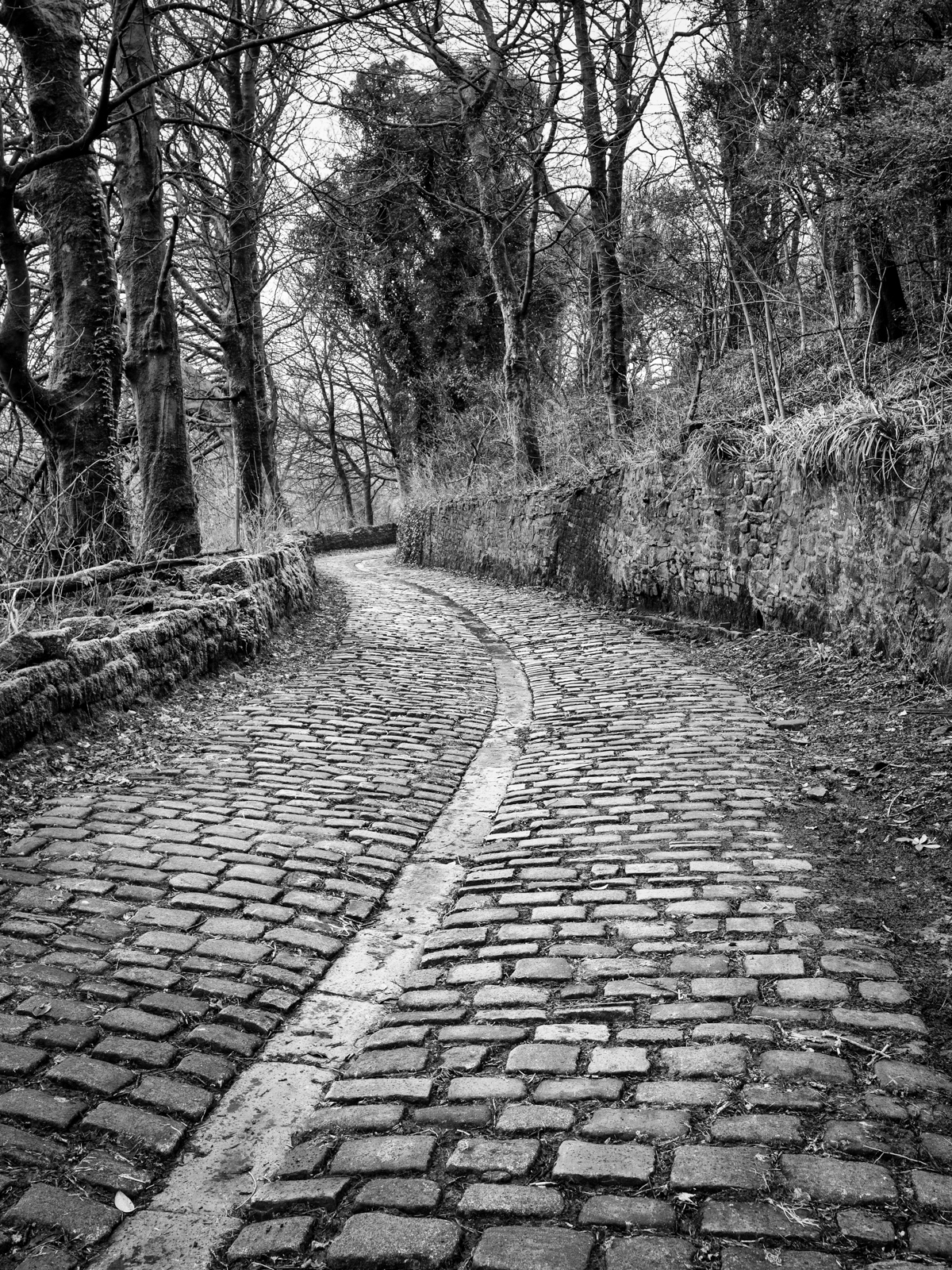
There were no public houses in Ramsbottom; Holcombe had two and several beer-houses, so there was significant traffic between the two settlements, downhill to work and uphill to drink. The village became a popular centre for recreation. The Holcombe Hunt was based nearby, cock-fighting was a popular pursuit and there was an annual Game Fowl Show. The annual Holcombe Wakes started as the church’s Saint’s Day celebration but were later famous for their debauchery. The last one was about 1880.
A new turnpike, now Lumb Carr Road / Helmshore Road was built in 1812 by the Elton and Blackburn Trust with a Toll House (the Old Bar House) to the north of the village. The Peel Monument was built on the hilltop in 1852. Emmanuel Church replaced the old Chapel in 1853 and the school was built about 1870.
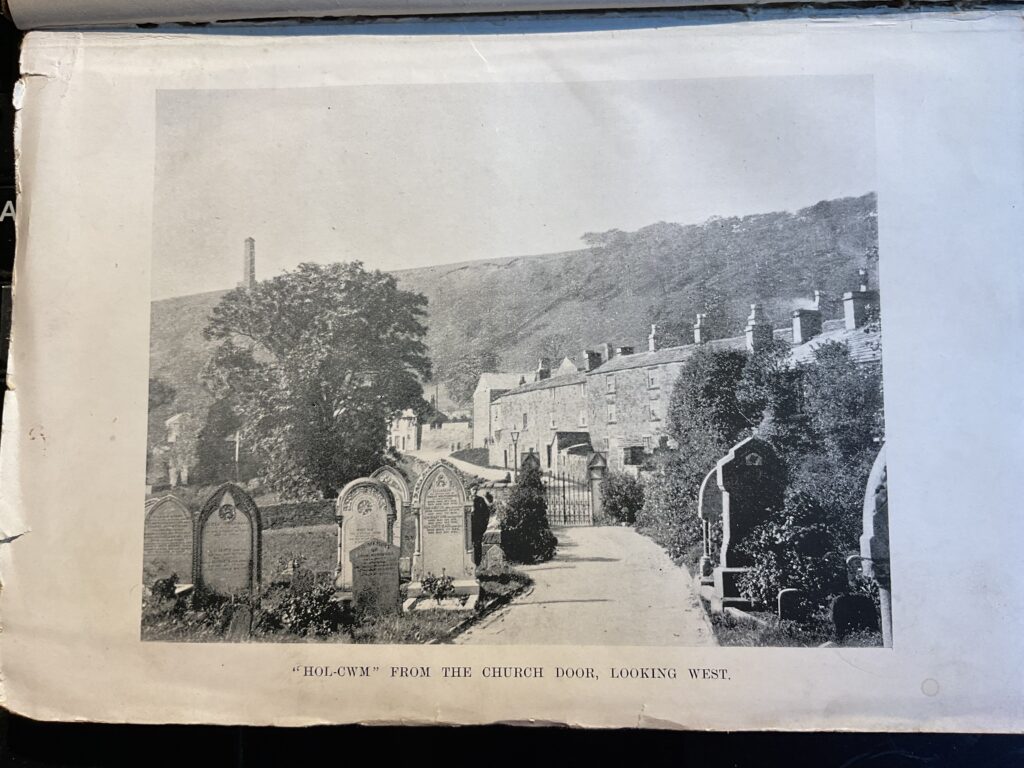
In September 1915, bombs were dropped in the village by a Zeppelin airship on a raid from Germany, damaging the School and the Post Office and several other buildings. Pictures below record the damage.
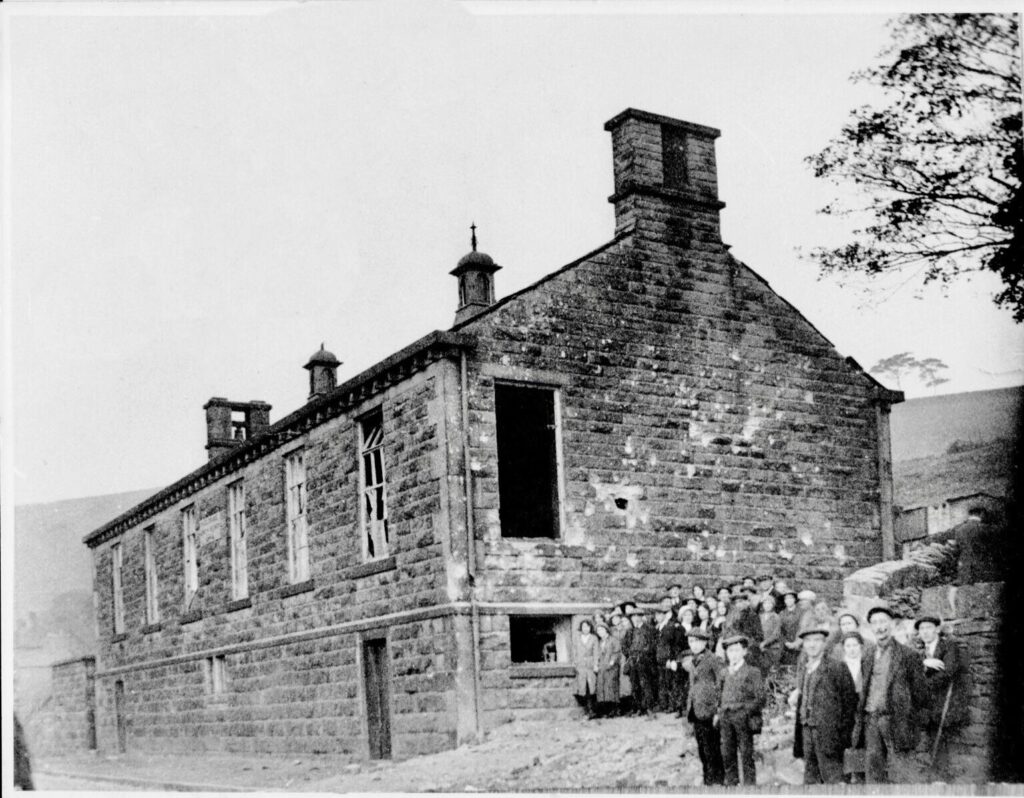
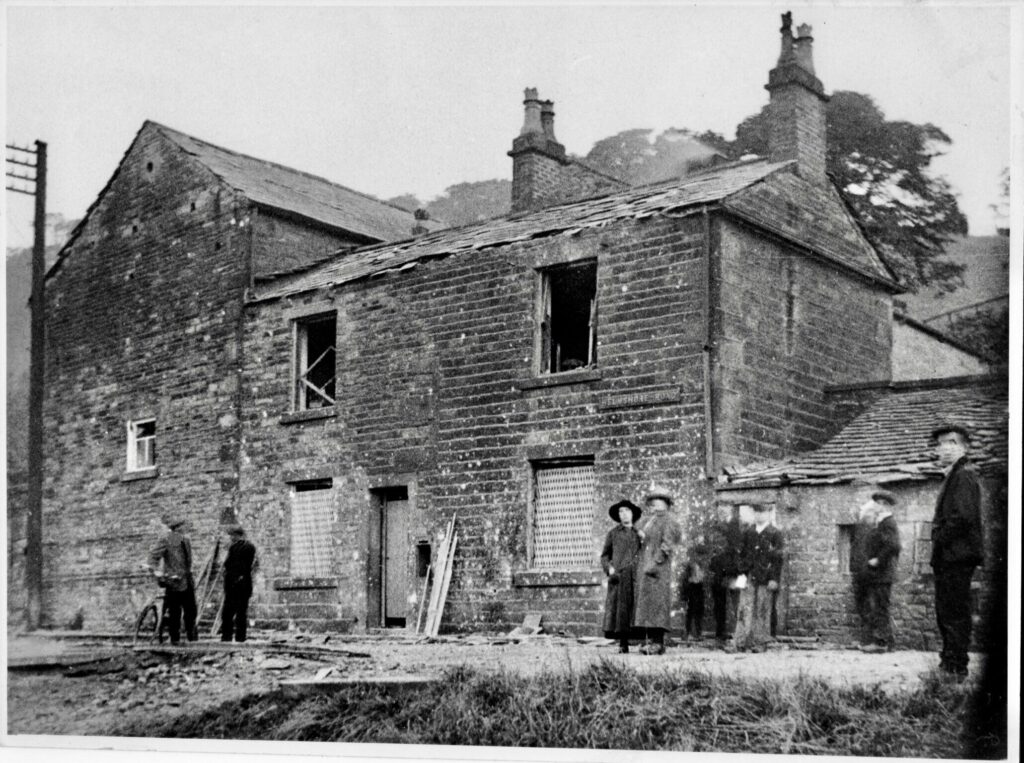
For much of the twentieth century, Holcombe had one or more shops, a Post Office and a bus service. These are now all gone. The village is essentially a dormitory for Ramsbottom and Manchester. The Green Belt and the Conservation area have limited further development and most building operations are extensions or improvements. The population is mostly middle-class and many are retired. They depend mostly on their cars to go to work and to shop. Activities are mostly leisure-related, and there are plenty of visitors, especially to the pub and the Tower and to walk the many footpaths.